Dave Rupp jumped at the opportunity to add a garden shed/man cave to his backyard. The only hiccup was he had to dismantle the structure that had stood in a cemetery since 1869 and rebuild it on his property. Thanks to his background in engineering and home repair, he was game to tackle the project.
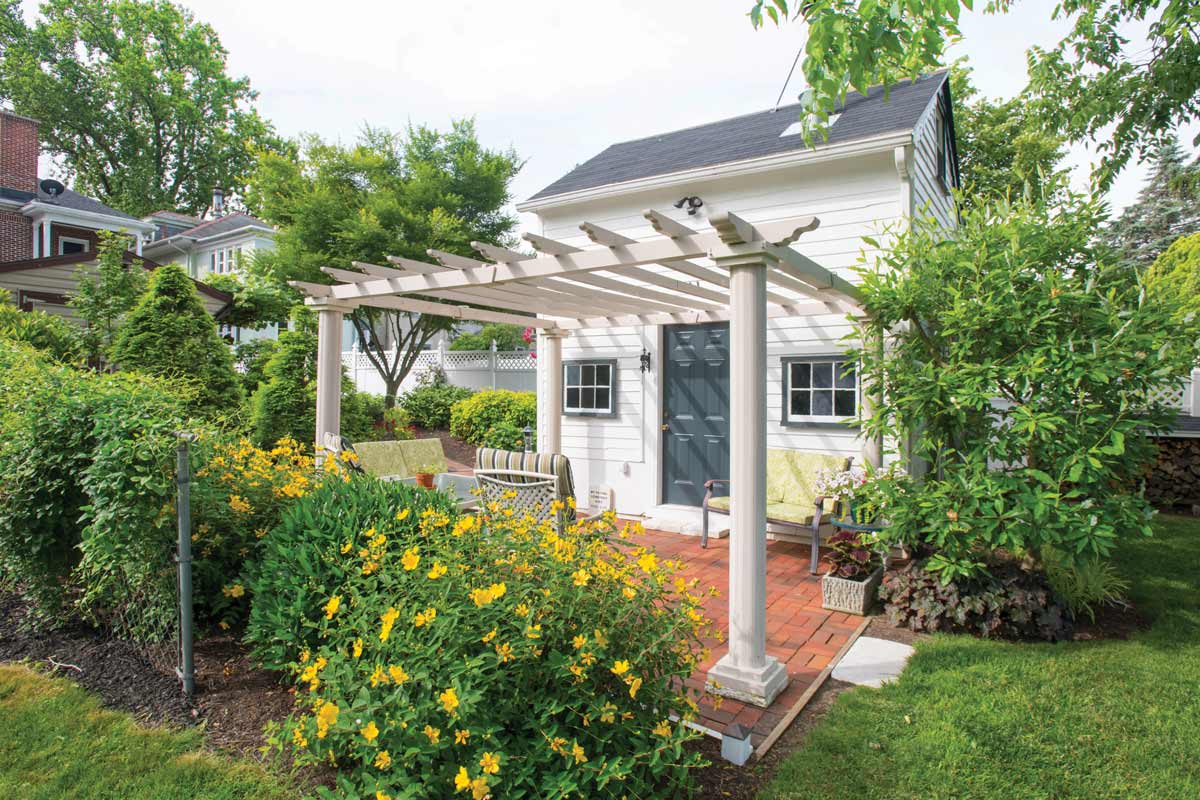
When Dave and Vivian Rupp bought their home in Columbia in 1998, the backyard was a blank canvas. Years of work transformed it into a green retreat that is filled with various seating areas, colorful gardens and the final piece of the puzzle, a garden shed/man cave that once stood in a local cemetery. Dave razed the shed and rebuilt it in his backyard.
The cemetery in question – Mount Bethel in Columbia – provides a history lesson of sorts, as it is the borough’s oldest, continually used place of rest. Dating to 1730, it is estimated that as many as 11,000 of Columbia’s deceased residents are interred in the 10-acre cemetery. Dave has been a member of the cemetery’s board of directors since 2005.
Columbia has always been home for Dave. “Born and bred,” he says, adding that his grandparents operated a pretzel and snack food company in Columbia for a time. He followed in their footsteps by manning a roasted peanut stand (the product line came from Bertie County Peanuts in North Carolina) at Columbia’s Market House for a period of time.
After graduating from Columbia High School, Dave joined the Marine Corps. Upon his discharge, he enrolled at Penn State University, graduating with an associate degree in engineering, which he parlayed into a 26-year career with the Pfaltzgraff Company. Four years prior to the company being sold in 2005, Dave was laid off, prompting him and one of his two sons to launch a handyman business that flourished for 15 years until he decided to retire. “I gained a lot of knowledge about home repairs through that business,” he says.
Dave also became adept at making home repairs through buying a house in Columbia that dates to 1915. The house (as well as two others) sits on a block that features homes that date to the 1800s and exemplify Victorian architecture. Dave explains that the three houses replaced a large mansion that was destroyed by a fire around 1900. Sandstone blocks were the only building elements that survived the flames. Incredibly, Dave discovered some of them partially buried in his backyard and made use of them for a walkway he built.
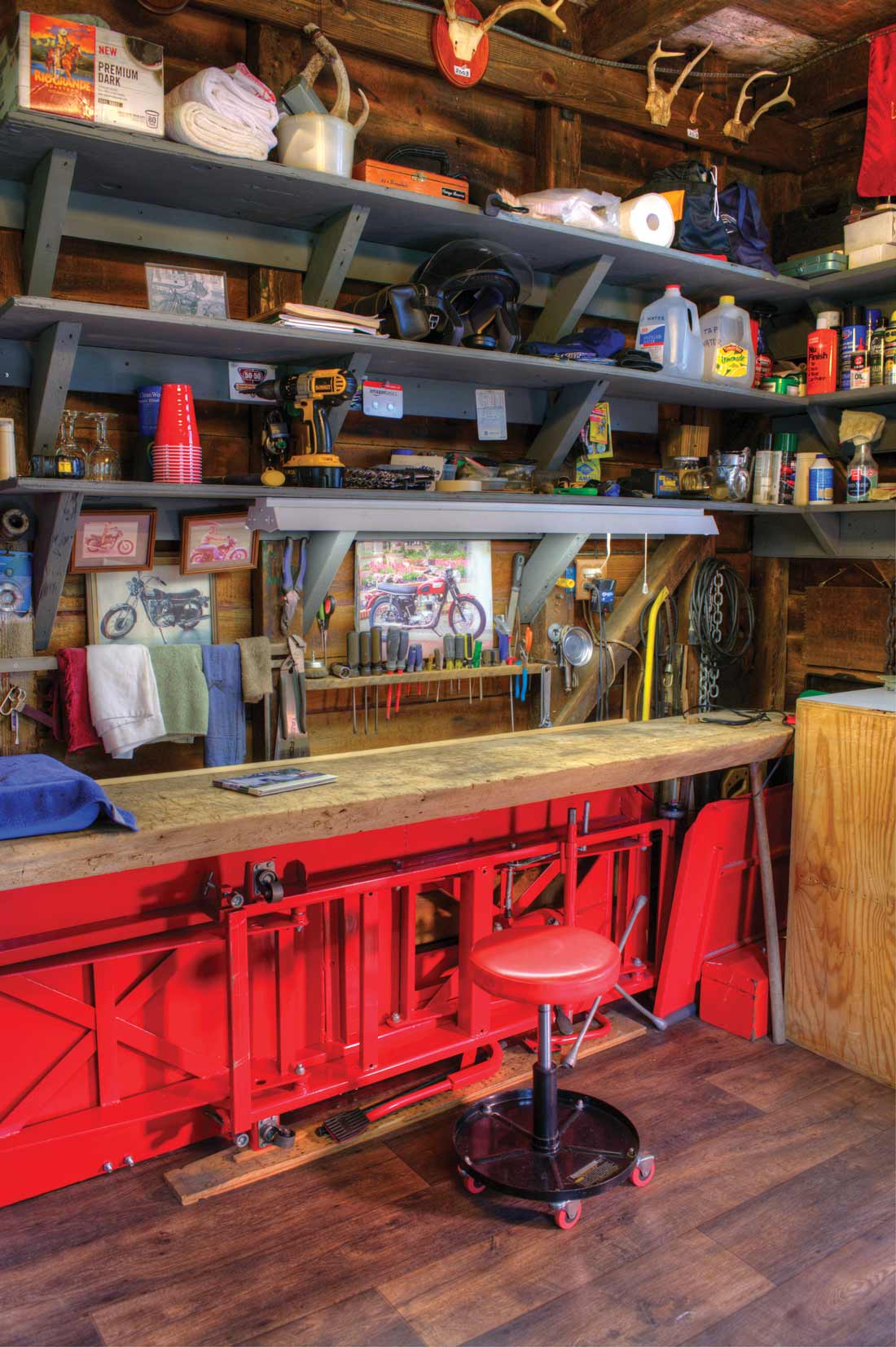
Dave’s garden shed/man cave is outfitted with a tool shop that is equipped with the remnants of a handyman company he once operated with one of his two sons. Dave’s love of motorcycles is also evident in the pictures that decorate the space.
While Dave and his wife, Vivian, didn’t have to devote much time to updating their new home, the backyard was another story. “There was nothing back there except a tree,” he says. So, in 1999, Dave went to work and over time he built a deck, a covered porch and a patio adjacent to the house. In 2003, he beautified the rear area of his 1/6-acre lot with a brick-lined pathway, trees, shrubs, a pergola and new fencing. Just as he and Vivian were preparing to install what he jokingly estimates to be “$2,000 worth of shade plants” they had bought for the flower beds, an ancient and very tall tree from two houses away came crashing down. “There went our shade!” he laughs.
Five years ago, Mount Bethel Cemetery was at a crossroads in making a decision about the fate of the two-story shed that dates to 1869 and was built in conjunction with the caretaker’s cottage. “It was in a bad location,” Dave says, explaining that the shed had become almost inaccessible due to the fact that the tombstones that surrounded it made truck access almost impossible. “Plus, it needed a new roof,” he continues, explaining that the board was on the fence about investing in an aging building whose purpose was diminishing. “So, I said, ‘I’ll take it,’” he recounts of the day he offered to solve the question of its fate by removing it.
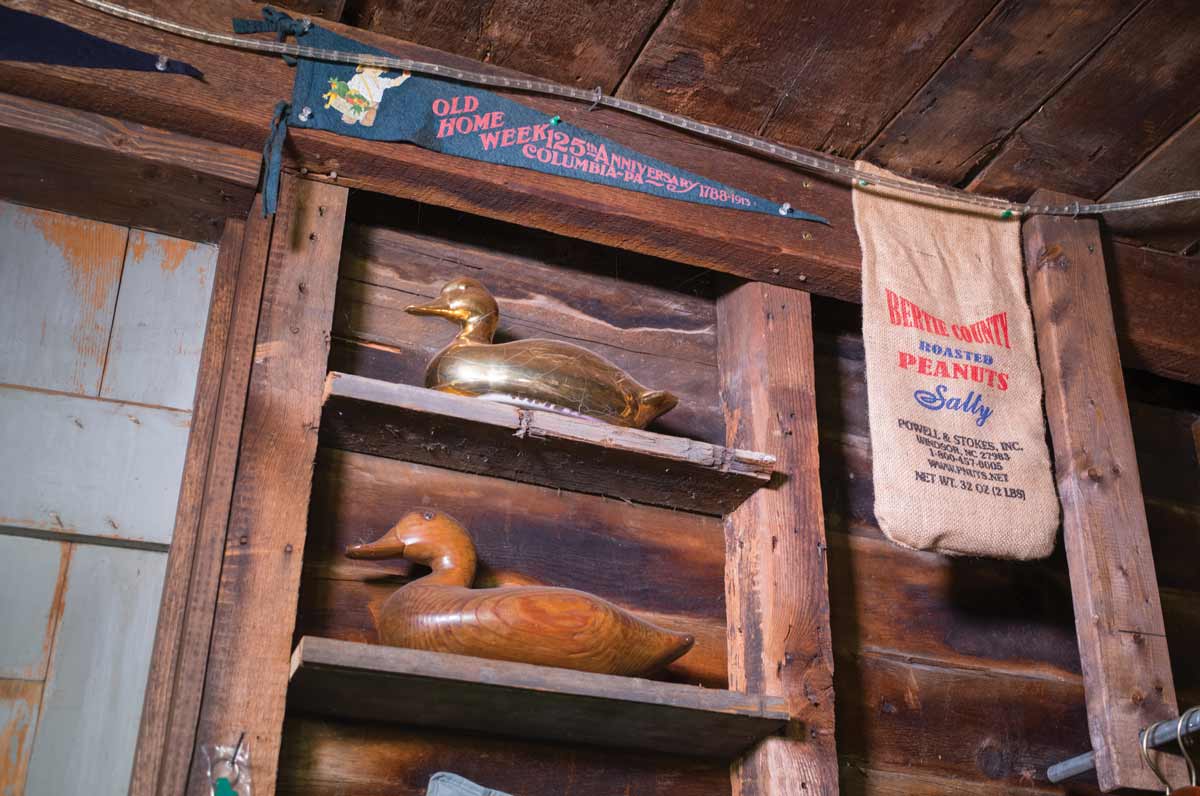
Decoys convey Dave’s love of the outdoors. The peanut bag is a relic of a stand he once operated at the Columbia Market House.
The board agreed to his proposal and Dave began dismantling the shed in December 2016, storing the pieces in his backyard. Dave took painstaking care to ensure the shed would easily and perfectly go back together. “I took a lot of pictures inside and out and numbered every piece,” he says. To his surprise, he found old tombstones stored under the shed. “They were and remain a mystery,” he says of the discovery.
When spring arrived, Dave set to work rebuilding the shed whose dimensions ensured a perfect fit between the fence and the pergola/patio. He began the process by digging a new foundation for the shed and restoring its windows. Then, he started the process of reconstructing the shed, which proved to be in remarkably good condition. “I only needed to replace 12 pieces of wood,” he recalls.
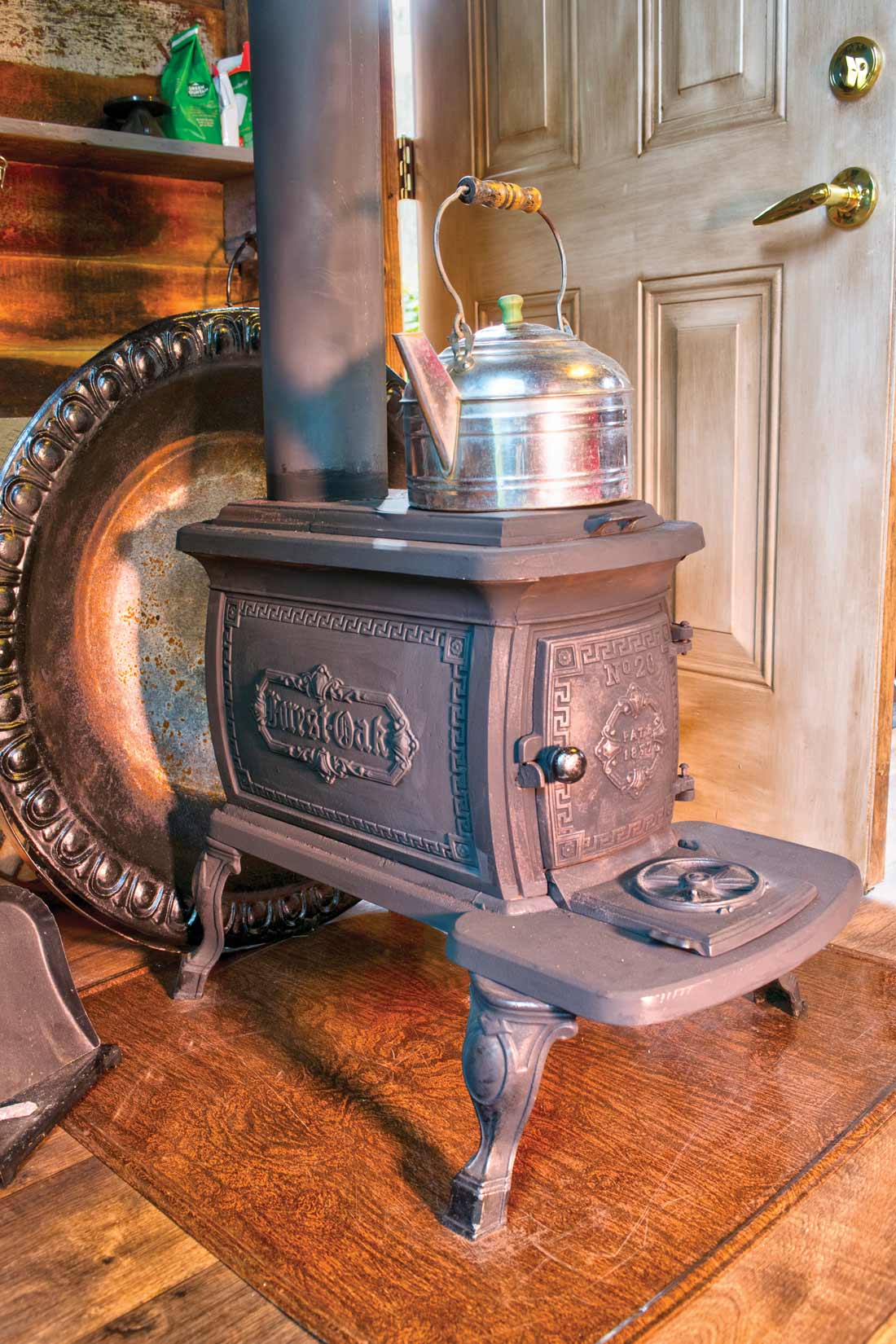
The Keeley #20 stove was made in Columbia and dates to the mid-1800s. Dave reports it keeps the shed toasty-warm in cold-weather months.
Outside, he didn’t stay true to the era in which the shed was originally built, as he added modern-day soffits and rain spouts to the structure. While he would have preferred to replace the cedar-shake shingles (he estimated them to be 100 years old) with identical material, he chose to go with asphalt shingles “in order to keep the cost down.” He also added another window to provide the interior with more natural light. A used door provided a proper front entrance and the top and bottom sashes of a window were utilized in order to create decorative accents on the front of the building.
The inside of the shed is pure man cave. The wood-look linoleum floor (a bargain-basement find at Ollie’s) perfectly complements the rustic structure. An expansive tool shop is equipped with the remnants of Dave’s handyman business. Creature comforts include a small television, a fridge and a Keeley #20 stove (made in Columbia) that probably dates to the mid-1800s. “It heats the shed up really well,” he notes of the relic he purchased from an antiques dealer.
Also in evidence are mementos from Columbia High School (Dave’s track and football letters), former Columbia businesses and town events. Trophies from hunting trips hang on the walls, while photographs convey Dave’s love for motorcycles. A self-published book that tracks the progress of moving and rebuilding the shed is also on display. The second floor is used for storing lumber and other construction necessities.
“I’m out here a lot,” Dave says of his backyard getaway. “In the summer, we’re outside all the time,” he says of the porches and patios that provide outdoor-living spaces.
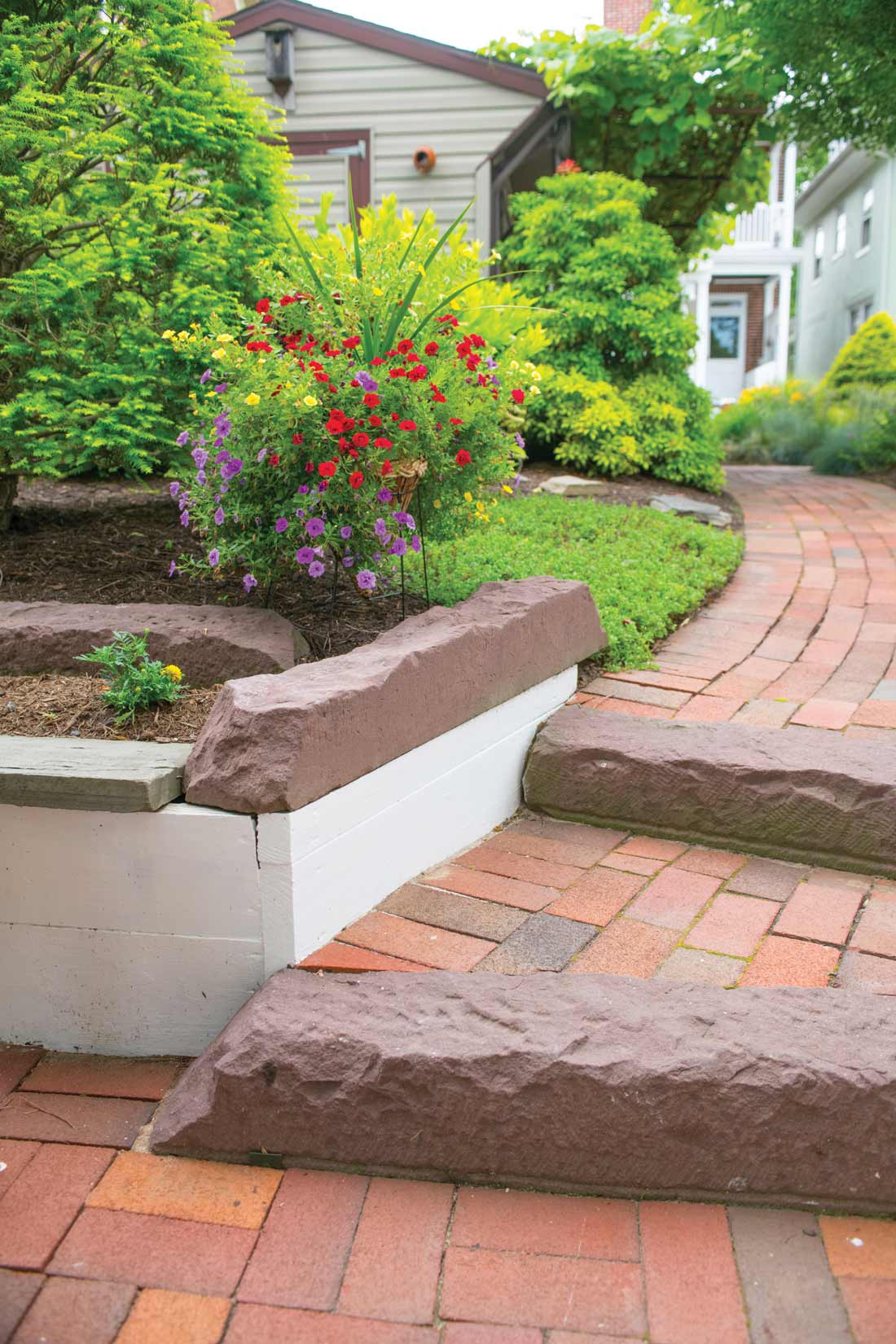
Dave used the sandstone blocks that survived a fire in 1900 and were partially buried in his backyard for one of his landscaping projects.
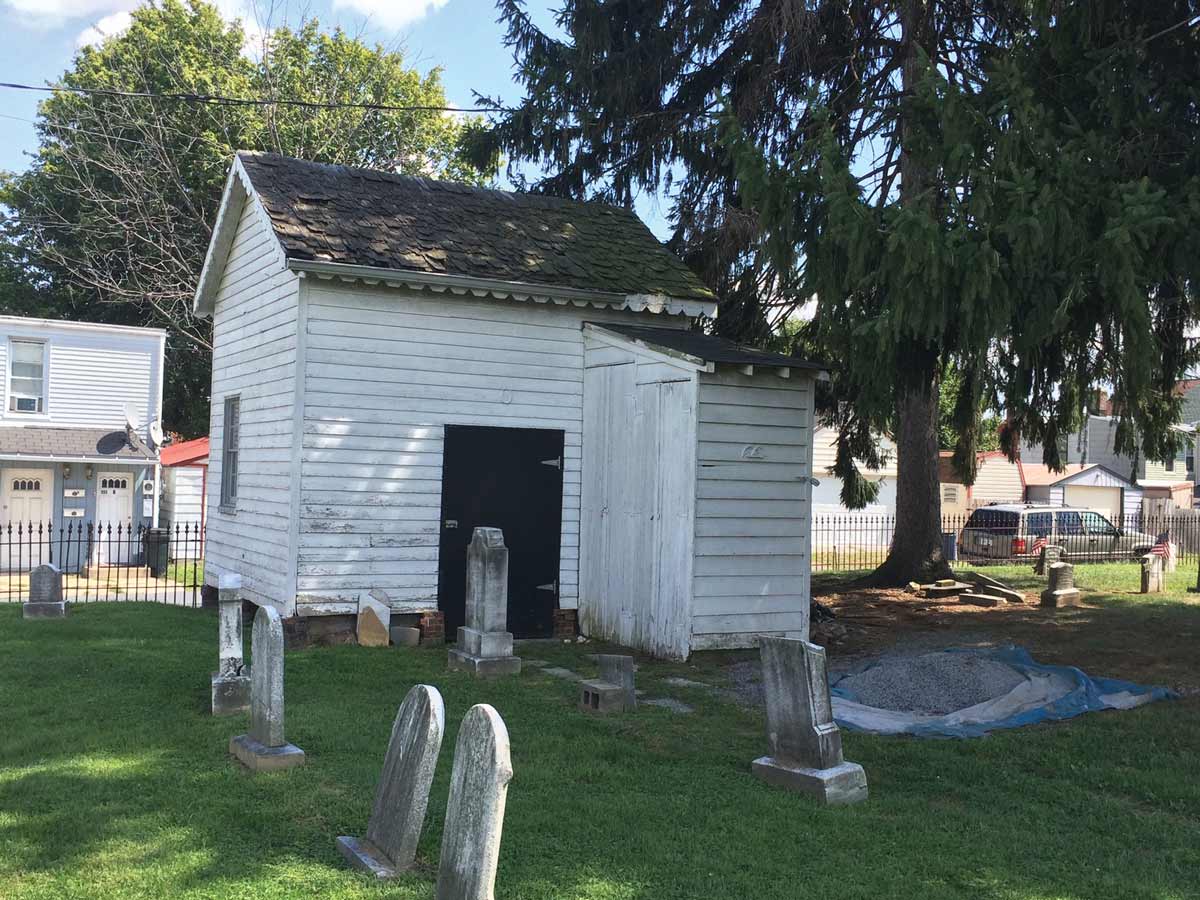
The shed as it originally stood in Mount Bethel Cemetery. A lack of accessibility and a deteriorating roof prompted the cemetery’s board to consider its future, giving Dave the
idea to raze it and rebuild it on his property. Photo courtesy of Dave Rupp.
A Volunteer Effort
April is regarded as Volunteer Appreciation Month and in Columbia, volunteers have played an integral role in bringing two of its historic cemeteries – Mount Bethel and Zion Hill – back to “life.”
Mount Bethel Cemetery
Dating to 1730, Mount Bethel is a history lesson in itself, in that those who are interred there represent a cross-section of Columbia’s residents, beginning with the Quakers, notably the Wrights, who are credited with founding the town. According to Dave Rupp, cemetery records contain Susanna Wright’s account of overseeing the burial of 15 people in the graveyard. No doubt, they are buried in what is now called Section I of the cemetery that was originally called Old Bethel and later Old Brick due to the fact that it was surrounded by a brick wall that was built in 1746. Simple grave stones marked the graves of deceased Quakers, as they didn’t use tombstones. The oldest legible grave marker dates to 1745.
The history section of the cemetery’s website is fascinating and contains all sorts of interesting tidbits. For example, the bricks that were used to build the aforementioned wall were ordered from England by Samuel Blunston, who intended to use them to build his home. He died before they arrived, hence they were utilized to build the cemetery wall.
Four of the five men who set fire to the covered bridge in an effort to keep Confederates from crossing the Susquehanna River on June 28, 1863 are buried at Mount Bethel.
As the smallpox epidemic of 1902 raged on, funerals held at the cemetery took place at midnight with only a doctor and a health officer in attendance.
By the early 1800s, plots in the cemetery had been granted to Columbia’s Presbyterian (Section K), Methodist (Section L) and Lutheran (Section M) churches. (The two Catholic churches have their own graveyards.) Yet another section was given over to the borough to serve as a burial place for indigent citizens.
To ensure the cemetery’s longevity, a stock company overseen by nine managers was formed and granted a charter in April 1868, via the Lancaster County Court of Common Pleas.
During the latter part of the 20th century, the appearance of the cemetery began to noticeably decline. Fewer burials were held. As the board members/managers retired or died, they were not replaced. At one point, the cemetery was being managed by one manager/board member.
In 1994, the Columbia Lions Club organized a clean-up effort. More than 100 volunteers arrived to mow, rake leaves and remove debris from the cemetery. (Such a volunteer effort continues to be held each fall.)
 The clean-up project prompted some concerned citizens to organize a meeting to discuss the future of Mount Bethel. A year later, the remaining shares were sold and a new board of directors composed of volunteers was elected. Today, the board is headed by Jane Moore and its members include Ron Mable (the cemetery’s superintendent), Kevin Kraft Sr., Claire Storm, John Hinkle Jr., David Mountz, Kathleen Lutz, David Rupp and Kathleen Hohenadel. The cemetery also became a nonprofit 501(c)(13) corporation and its operating budget is now derived from a small trust, grants, monetary gifts, internment fees, the sale of burial plots and fundraising events.
The clean-up project prompted some concerned citizens to organize a meeting to discuss the future of Mount Bethel. A year later, the remaining shares were sold and a new board of directors composed of volunteers was elected. Today, the board is headed by Jane Moore and its members include Ron Mable (the cemetery’s superintendent), Kevin Kraft Sr., Claire Storm, John Hinkle Jr., David Mountz, Kathleen Lutz, David Rupp and Kathleen Hohenadel. The cemetery also became a nonprofit 501(c)(13) corporation and its operating budget is now derived from a small trust, grants, monetary gifts, internment fees, the sale of burial plots and fundraising events.
The board, aided by citizen volunteers, has been engaged in ambitious projects over the past 25 years, including the hiring of people to mow the lawn on a consistent basis, the removal of 72 trees, transferring burial records to the cemetery’s website, paving existing roadways, restoring the lawn crypts, repairing and stabilizing the iron fencing that was installed between 1890 and 1900, making repairs to the caretaker’s cottage and establishing the Helen Schlossman Memorial Garden, where cremated remains are interred.
Fundraising has also become more consistent and creative. For example, seamstress/designer extraordinaire, Janet Wood, has been sewing masks throughout the pandemic, with proceeds benefiting Mount Bethel. Events tentatively slated for 2021 include:
April 23 & 25: A Spice of Life
Artist/educator Joanna Spicer will be displaying her work at the caretaker’s cottage on Friday, 5-8 p.m. and Sunday, 2-4 p.m.
May 16: The Last Ride and Macabre Creations
This crypt-version of a car show features an exhibit of carriages and vehicles used for funerals. Vendors selling macabre creations will also be on hand. 11 a.m.-3 p.m.
August 16: Fete en Noir
Details TBA
October 31: Dia de Muertos
Details TBA
December 18: Wreaths Across America
Each December, cemeteries across the United States honor veterans by providing their gravesites with wreaths that have been purchased/donated by the public. (A portion of the sales benefit the participating cemeteries.) Mount Bethel extends its efforts by including gravesites at nearby Zion Hill Cemetery. 12 p.m.
Mount Bethel Cemetery is located at 700 Locust Street in Columbia. Self-guided tours are available. For more information, visit mtbethelcemetery.com.
Zion Hill Cemetery
An untold number of Columbia’s deceased Black citizens are interred in this cemetery that had nearly become obliterated by the construction and expansion of Route 30, water issues and the passage of time that caused the area to be overcome by weeds and brush. That changed in the late ‘90s, when a contingent of community volunteers, Boy Scouts, Black church leaders, park rangers and borough officials began the daunting task of reviving the landscape, unearthing tombstones, topping unmarked graves with wooden crosses and erecting signage and a flag pole.
The cemetery is notable for the Civil War veterans who are buried there, including members of Columbia’s Black Company, who aided the Union Army, Pennsylvania militia and local citizens in keeping the advancing Confederate troops from crossing the Susquehanna River between Columbia and Wrightsville on June 28, 1863. Among the veterans interred at Zion Hill are Robert Loney, who was also a conductor for the Underground Railroad. Members of the famed 54th Massachusetts Infantry Regiment, an all-Black volunteer company that aided Columbia in thwarting the Confederate’s advance on June 28, 1863, and whose story was the subject of the Oscar-winning movie, Glory, are buried there, as well.
Zion Hill Cemetery is located at 553 N. 5th Street in Columbia.

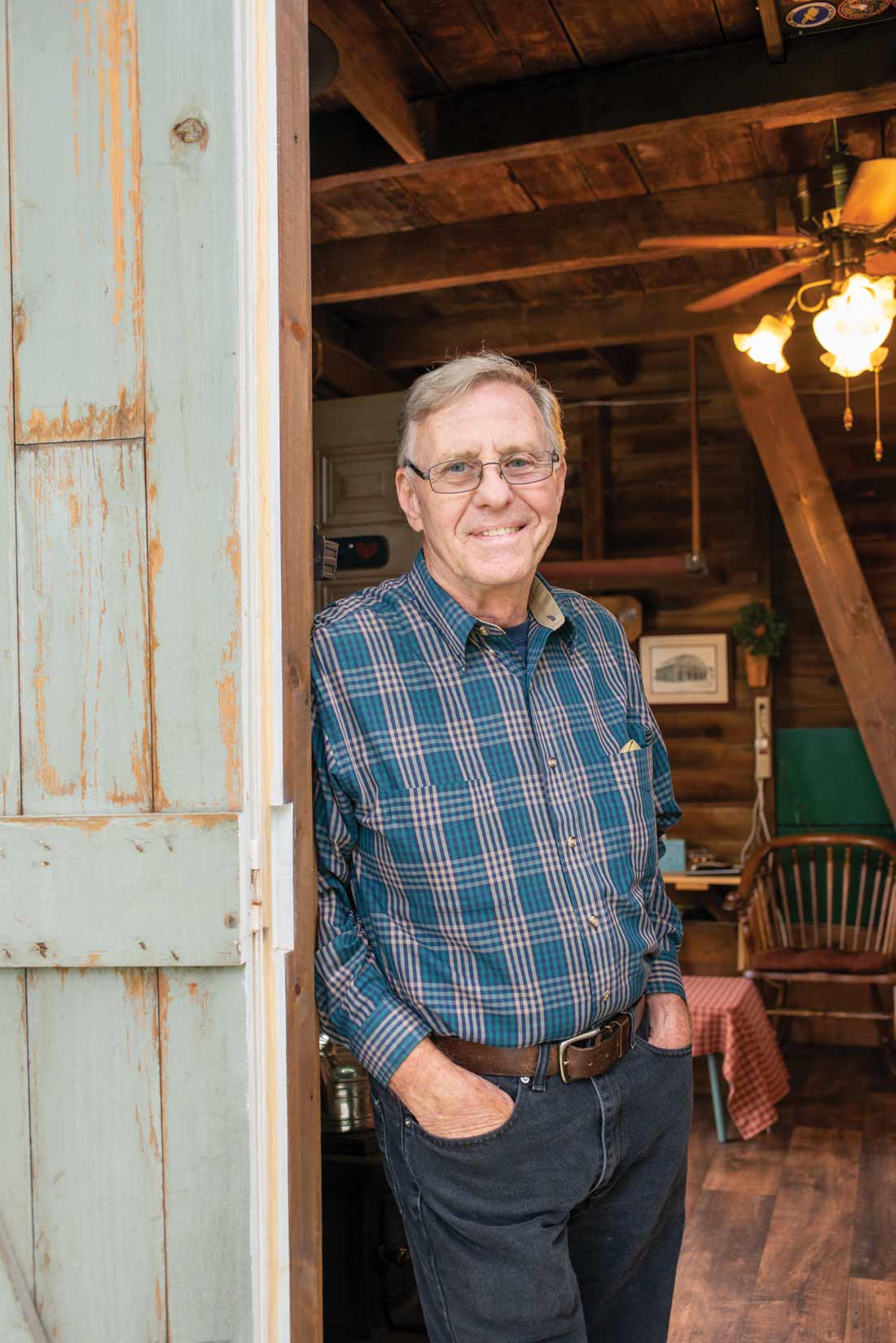
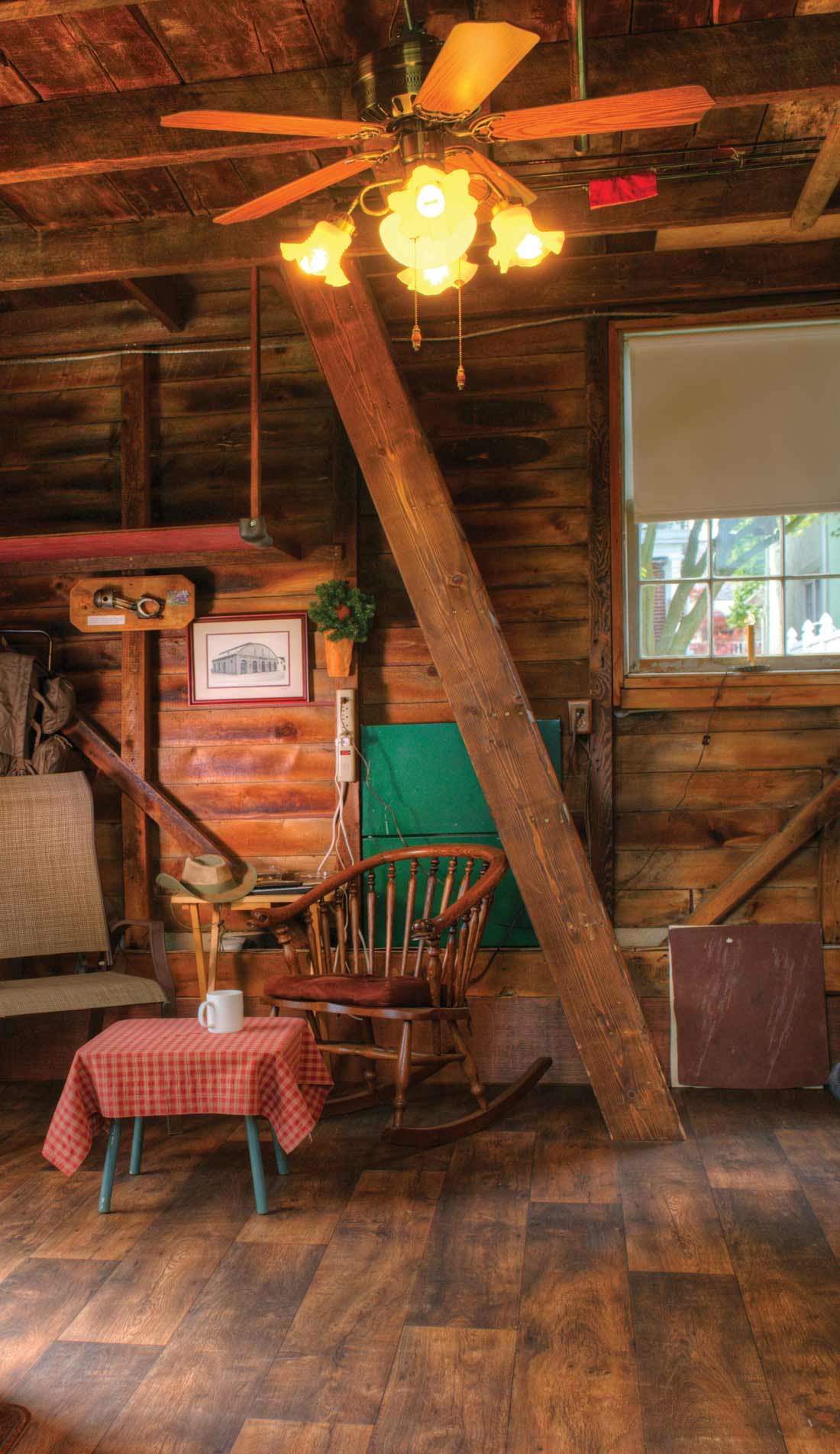
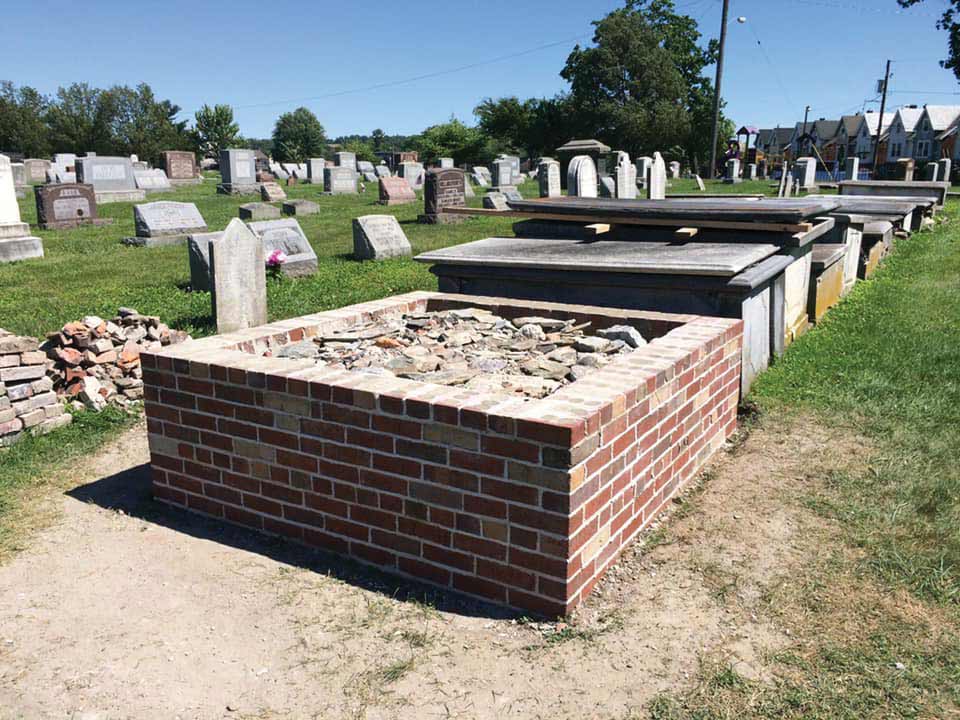

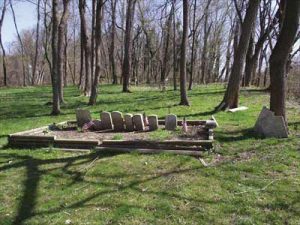
Recently found this article, if the owner of the Forest Oak box heater is interested in it’s history. They can contact me. These were patented by a Pattern Company in Troy NY in 1877, we know of at least 1/2 dozen foundries that made this design, including Keeley. Keeley made it in various sizes for years, just like the other foundries did.
Hi, I have been researching info on my Forest Oak No.25, manufactured by The Keeley Stove Co. Not a lot of info. Was wondering what the difference in No.’s means and be value?